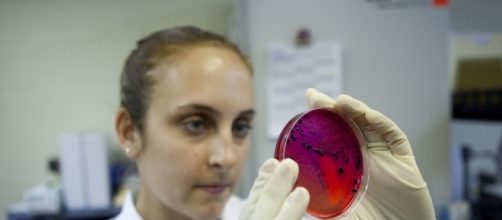An innovative research conducted recently has found that Salmonella could one day be used to wipe out cancer after experiments on mice showed the bacteria was extremely effective at eliminating tumours. The research was carried out by scientists at Chonnam National University in South Korea. The Food Poisoning bug salmonella was genetically modified to make it innocuous, then injected into 20 mice with colon cancer and the disease disappeared in half of them after 12 days.
They believe this could sooner or later be used to treat a range of tumours in humans.
Professor Joon Haeng Rhee of Chonnam said: “We believe this is a groundbreaking trial. We have a tangible plan to start preclinical and clinical trials in humans.”
This is not the first time that research has indicated that bacteria such as salmonella could be useful in the battle against cancer. However, this is the first to prove it can eradicate the disease.
The Institute of Cancer Research in London has welcomed the research. Professor Kevin Harrington from the department of Biological therapies said: “This is a fascinating new approach to using bacteria. Instead of asking bacteria to kill cancer cells directly, researchers have genetically engineered salmonella so it expresses a gene that triggers the immune system to mount an attack on the tumour.
“The results show that this approach is effective against a range of tumour types with little or no toxicity in mice.”
he also said, "However, until now, attempts to use bacteria as anti-cancer therapies have had limited success, both in the laboratory and in the clinic."
The discovery has also been revealed in the Science Translational Medicine journal published by the American Association for the Advancement of Science.
How does this bacteria actually work?
The discovery stems from another study when scientists discovered that bacteria attacking shellfish produced a protein that induced a strong immune response. The modified salmonella releases the same protein to prod the immune system into action, causing them to release molecules that can kill cancer.
Next steps
Going forward, scientists will see if this gene-editing discovery is safe and whether it could be used to treat humans.

